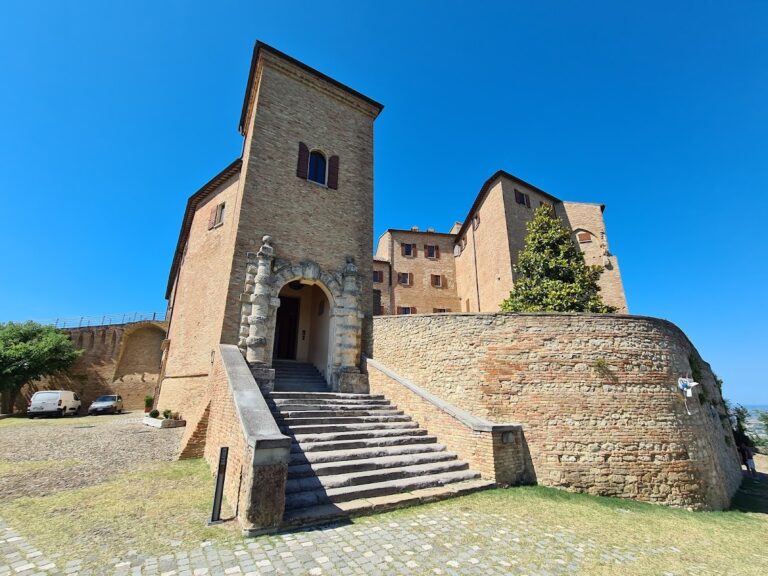Castle of Giaggiolo: A Medieval Fortress in Italy
Visitor Information
Google Rating: 4.2
Popularity: Very Low
Google Maps: View on Google Maps
Country: Italy
Civilization: Unclassified
Remains: Military
History
The Castle of Giaggiolo stands near Forlì, within the municipality of Civitella in Italy. This fortress was established during the medieval period by local noble families and played a significant role in the border region between Romagna and Tuscany.
The earliest documentation of the castle dates back to 1021, when Emperor Henry II, Pope Benedict VIII, and the Archbishop of Ravenna Eriberto formally granted possession of the extensive County of Giaggiolo to the descendants of a noble named Severo. This founding family, known as the Conti Severi di Giaggiolo, traced its heritage to aristocratic origins in the Eastern Roman Empire, adopting a coat of arms that featured a crescent and a tower. The castle served as the administrative center of this county, marking a significant political entity controlling territory along the volatile border region.
During the 13th century, the castle became linked with the powerful Malatesta family, a dynasty influential in Romagna. One branch, called the Malatesta di Giaggiolo, held the castle as their seat. Among them, Paolo Malatesta gained literary fame through Dante’s Divine Comedy, and his wife Orabile Beatrice, daughter of the Severi counts, was born in the castle around 1255. This connection underlines the castle’s importance as a noble residence.
In 1263, the castle’s title passed through marriage to Guido da Montefeltro, an important condottiero known for his military skill and strategic alliances. By wedding Manentessa di Ghiaggiolo, daughter of the ruling family, he strengthened the castle’s ties to the Ghibelline faction in nearby Forlì. The turbulent political climate is highlighted by the assassination of Uberto Malatesta, who was married into the family and served as Count of Giaggiolo, in 1324 due to his Ghibelline allegiance. These events illustrate the castle’s role in the power struggles between factions during the Middle Ages.
Towards the late medieval period, administrative functions at the castle are evidenced by the survival of a statute dated 1376. A copy of this legal document is preserved in the Episcopal Archive of Sansepolcro, confirming continued governance and legal administration associated with the castle and its surrounding territory.
Remains
Today, the Castle of Giaggiolo is largely in ruins, but its remaining structures reveal aspects of its former defensive purpose. Set at an elevation between approximately 468 and 495 meters in the Apennines, the castle occupies a strategic position overseeing the river basins of the Bidente and Ronco. This location reinforced its role in controlling movement through the mountainous borderlands.
Among the surviving elements, the most prominent is a strong octagonal bastion. This sturdy tower served a defensive function, likely providing vantage points for surveillance and protection against attackers. The octagonal shape is distinctive and suggests an advanced approach to military architecture for its time, designed to reduce blind spots and better withstand assault.
The remainder of the castle’s structures lie in fragmentary condition, with ruins scattered around the site. Photographic evidence documents the bastion and the general ruinous state of the castle walls, yet no other architectural features or associated artifacts have been specifically recorded.
Beyond the bastion, no further construction details, decorative elements, or inscriptions are noted in the historical record. The castle’s coat of arms, connected to the founding Conti Severi family, remains a key symbolic association, but no physical traces of it have been described in the surviving ruins. The lack of additional archaeological finds or modifications limits a fuller understanding of the castle’s original layout.
Despite its ruined state, the Castle of Giaggiolo continues to testify to the medieval history of its region through its remaining bastion and documented historical importance as a seat of noble families and regional governance.










